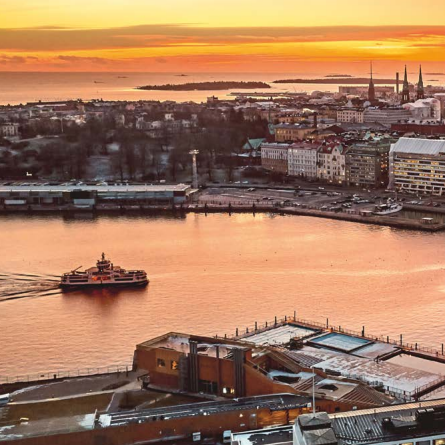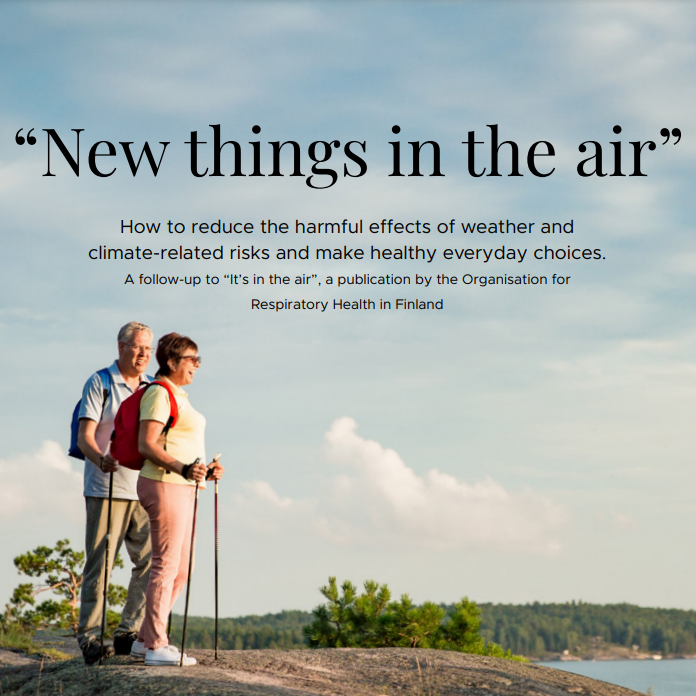The changes arising from global warming are affecting our living environment and health in a number of different ways. In an ageing population, climate change will also become a public health issue: the adverse health effects of global warming will be felt most strongly by the elderly and those with long-term ill health. Global warming must be limited to a maximum of 1.5°C. Now is the time to prepare for the direct health risks being brought about by climate change.
The Organisation for Respiratory Health in Finland has already been taking a stand on issues relating to outdoor air quality for several decades. Our latest approach to creating awareness is The Organisation for Respiratory Health in Finland’s programme for preparing for and reducing weather and climate risks (2019−2022). This programme provides information about the impact of climate change on respiratory health, analyses the potential for self-care through exercise, and considers the impacts of urbanisation and an ageing population on these issues.
The programme consists of two parts:
- The first part answers the question ‘How is climate change affecting people’s respiratory health?’
- The second part answers the question ‘How is climate change affecting the built environment?’
In Finland and the EU, the annual limit value for PM2.5 particulate matter is 25 micrograms per cubic metre of air (25 µg/m3). The World Health Organisation (WHO) has a stricter recommendation: 5 µg/m3 per annum.
The Organisation for Respiratory Health in Finland demands that Finland starts complying with the World Health Organisation’s recommendations.
We all have to start reacting to and preparing for the health risks caused by climate change now.
Together, we will be able to achieve more, so everyone can breathe more easily – both now and in the future.
Related content
Other topics that may interest you

It’s in the air
The Organisation for Respiratory Health in Finland’s programme for preparing for and reducing weather and climate risks.
10 solutions
Solution 1: Maintain and promote your contact with nature.
Solution 2: Foster biodiversity.
Solution 3: Foster urban nature during zoning.
Solution 4: Take precautions against animal-borne diseases.
Solution 5: Prepare for weather risks, particularly heatwaves.
Solution 6: Construction must consider changing weather conditions.
Solution 7: Construction must consider changes in soil moisture.
Solution 8: Demand a reduction in fine-particle emissions.
Solution 9: Burn wood cleanly – particularly in the winter and in urban areas.
Solution 10: Reduce street dust and its health risks.

New things in the air
How to reduce the harmful effects of weather and climate-related risks and make healthy everyday choices. A follow up to “It’s in the air” publication.